NieR: Automata is unlike any other video game. Set in a desolate and dystopian future, Platinum Games’ Automata combines elements of hack-and-slash, RPG, shoot-’em-up and bullet hell. Moreover, it offers an unexpectedly deep story that delves into existential themes in a manner unparalleled by any other video game or medium to date.
Initially, the game’s premise may seem reminiscent of standard science-fiction tropes: earth was attacked by aliens, who deployed an army of robotic machines, forcing the remaining humans to seek refuge on the moon. As humanity’s final line of defense, YoRHa, an elite android program, is developed, with Automata‘s main character 2B a part of it.
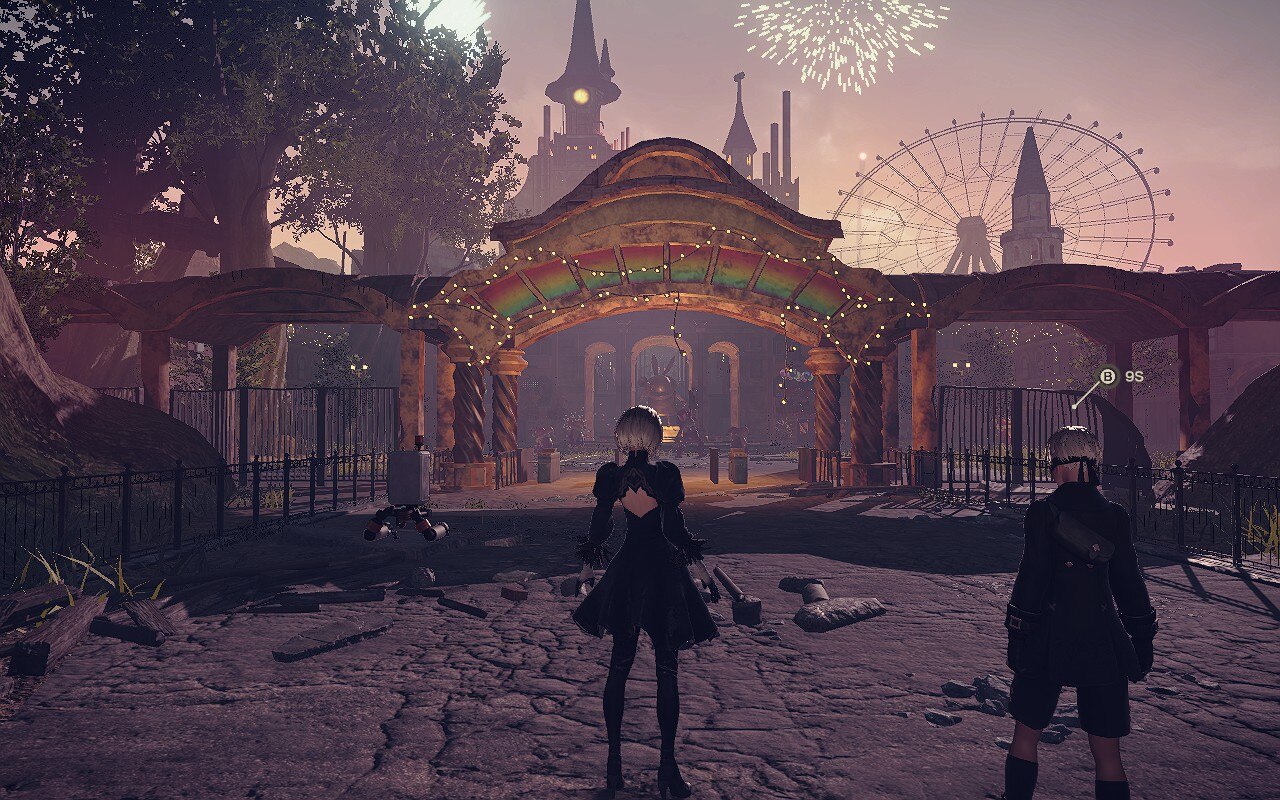
To reclaim earth and free humanity of the evil-minded robots and their alien overlords, 2B, along with her combat companion 9S, shuttles back and forth between the moon and earth. Amidst the ruins of a crumbling city the unlikely duo embarks on a twisting and riveting journey that is at times surreal and outright difficult to grasp, even after playing through the game multiple times – a suggestion explicitly made by publisher Square-Enix.
However, NieR: Automata offers a truly unique gaming experience in both design and storytelling. With its 26 different endings (as numerous as the letters of the alphabet), the full depth of Automata is only fully appreciated after completing at least endings A through E. While ending A provides a satisfying conclusion, Nier: Automata only truly captivates players during playthrough B and C, culminating with deep metaphysical inquiries by ending E.
Subsequent playthroughs gradually unveil the game’s philosophical underpinnings. For instance, it is intriguing to observe how androids perceive themselves to be sentient beings like humans, unlike the emotionless and lifeless robot machines. Automata also fearlessly explores profound topics such as anger, fear, conflict, the meaning of life, death and loss, engaging players directly with these themes.
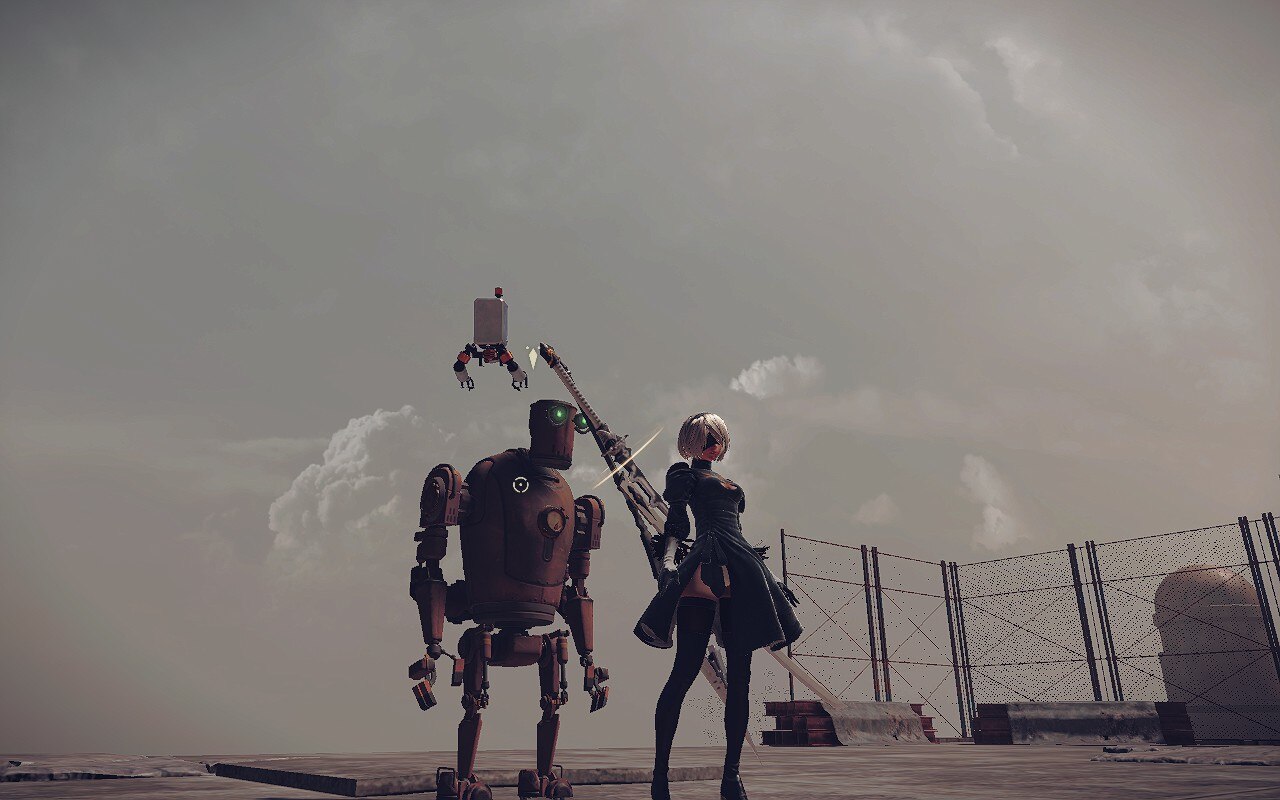
To accentuate these profound themes, developer Platinum Games integrates references to modern and contemporary philosophers. For instance, at one point 2B encounters a pacifist robot called Pascal, inspired by the French philosopher Blaise Pascal. During a later sequence in the game, Robot Pascal is highly skeptical of the work of Friedrich Nietzsche, whose classic “God is dead” statement is referenced in the very first minutes of the game.
Players will also interact with a large-ish robot called Jean-Paul (Sartre) whose existentialist teachings draw many followers, chief among them ballet dancer Simone (de Beauvoir). Sartre’s existentialist themes are meticulously woven into the later stages of NieR: Automata, suggesting strength of character, defiance in the face of adversity, and self-sacrifice as the essence of life and existence.
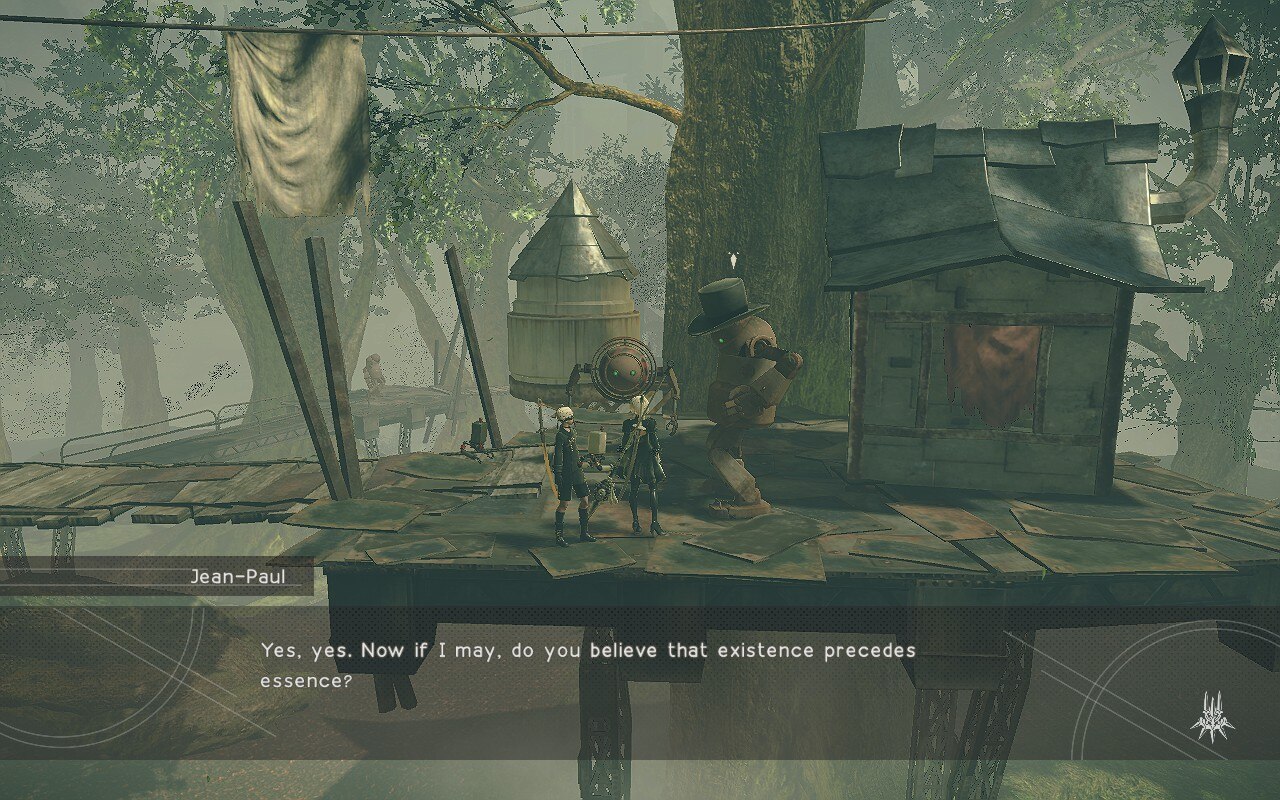
The relatively sparse open world of Automata serves as a theatre stage for its protagonists to shine. The robot-infested city is a parkour playground, offering players a sense of freedom as they traverse the landscape with fast-paced running, jumping on and off cliffs, surfing through sand dunes, and sliding down rusty sewage pipes. This fluidity extends to combat, where 2B absolutely excels.
In typical Platinum Games fashion, combat in NieR: Automata is spectacular, featuring oversized weaponry, breathtaking double jumps, aerial assaults, and cinematic action sequences. The intensity of battling atop a moving theme park rollercoaster is sure to leave players awestruck, for example. Multiple weapon combinations that can be swapped out on the fly and the ability to combine melee and ranged attacks simultaneously make for wonderful attack combos that encourage experimentation.
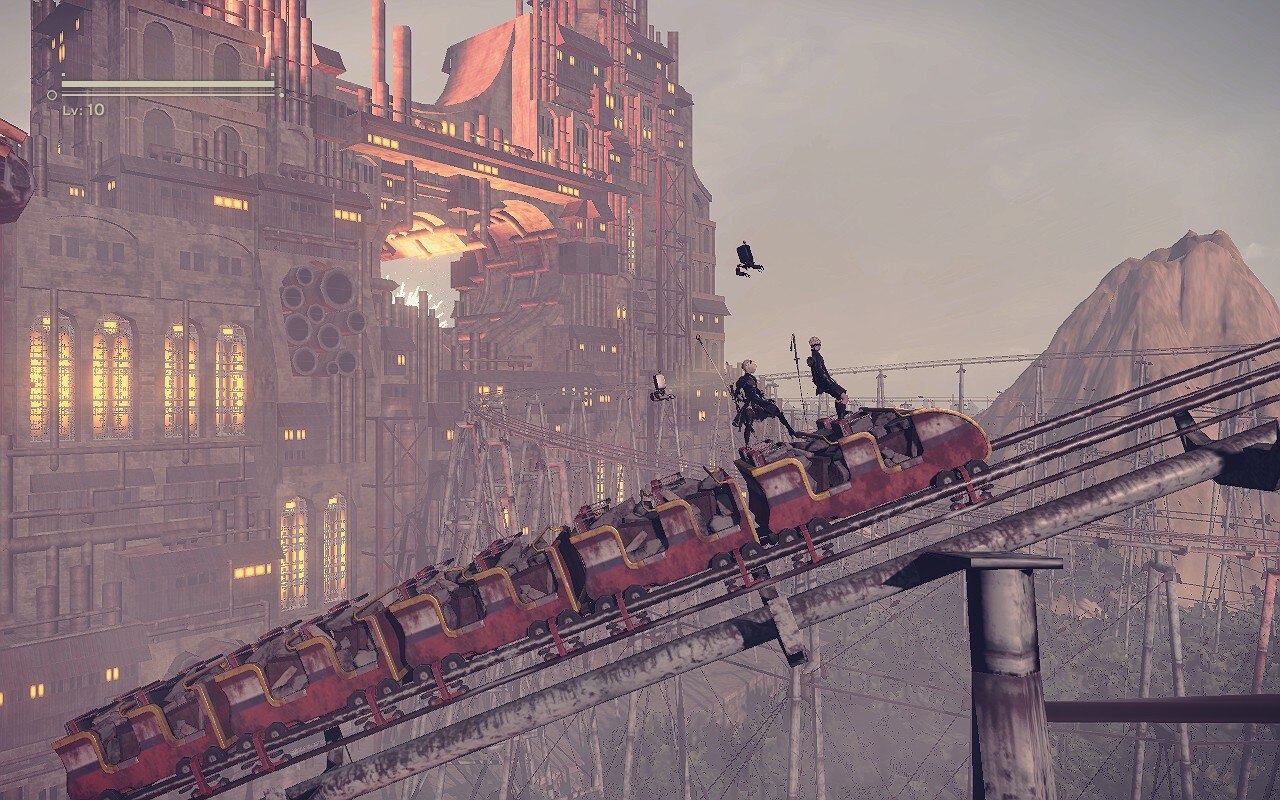
Moreover, the game showcases exemplary camera work, dynamically changing perspectives to enhance gameplay variety and emphasize story elements and mission objectives. However, the 3D map navigation is one aspect where NieR: Automata falls short, proving cumbersome even after 30 hours of gameplay.
The game’s fast-paced action and evolving settings are further accentuated by its excellent soundtrack. Composer Keiichi Okabe skillfully and beautifully captures Automata‘s overall melancholic atmosphere, seamlessly transitioning background music to suit various situations, echoing the game’s open world design and radically different environments.
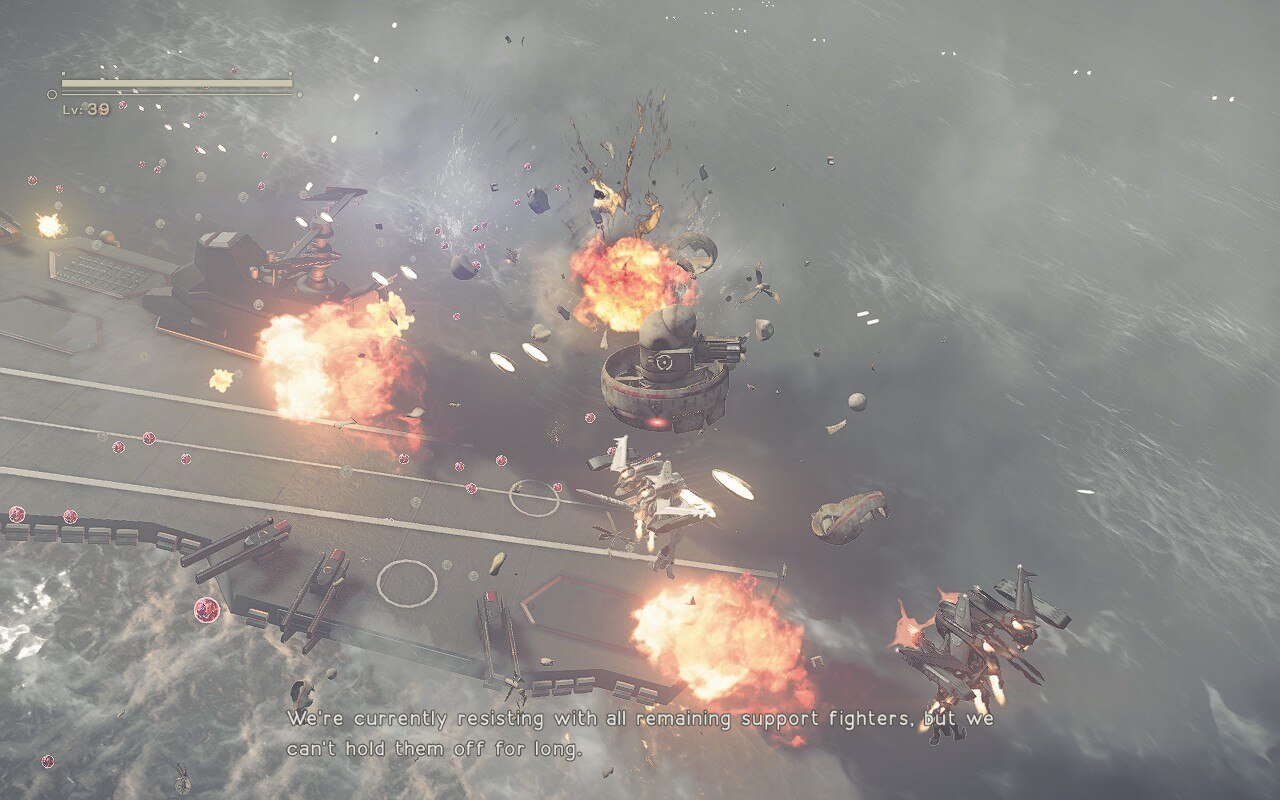
NieR: Automata incorporates RPG mechanics through its android chip system, allowing players to customize 2B to their own liking and play style. In the same vein of Ratchet and Clank, players can collect nuts and bolts to purchase upgrades or combat items. Similar to Dark Souls, 2B loses her gear and items upon death, having to recover them before her next death in fear of losing them permanently. Thankfully, however, death in Automata is not nearly as likely with forgiving healing options and generous saving points.
While NieR: Automata excels in storytelling through its main quest, its side quests often lack creativity. Too often relatively mundane fetch quests or escort missions were sprinkled in between actual story-related assignments. As a result, players might find themselves traversing familiar ground multiple times, especially since fast travel unlocks only after a certain point in the game.
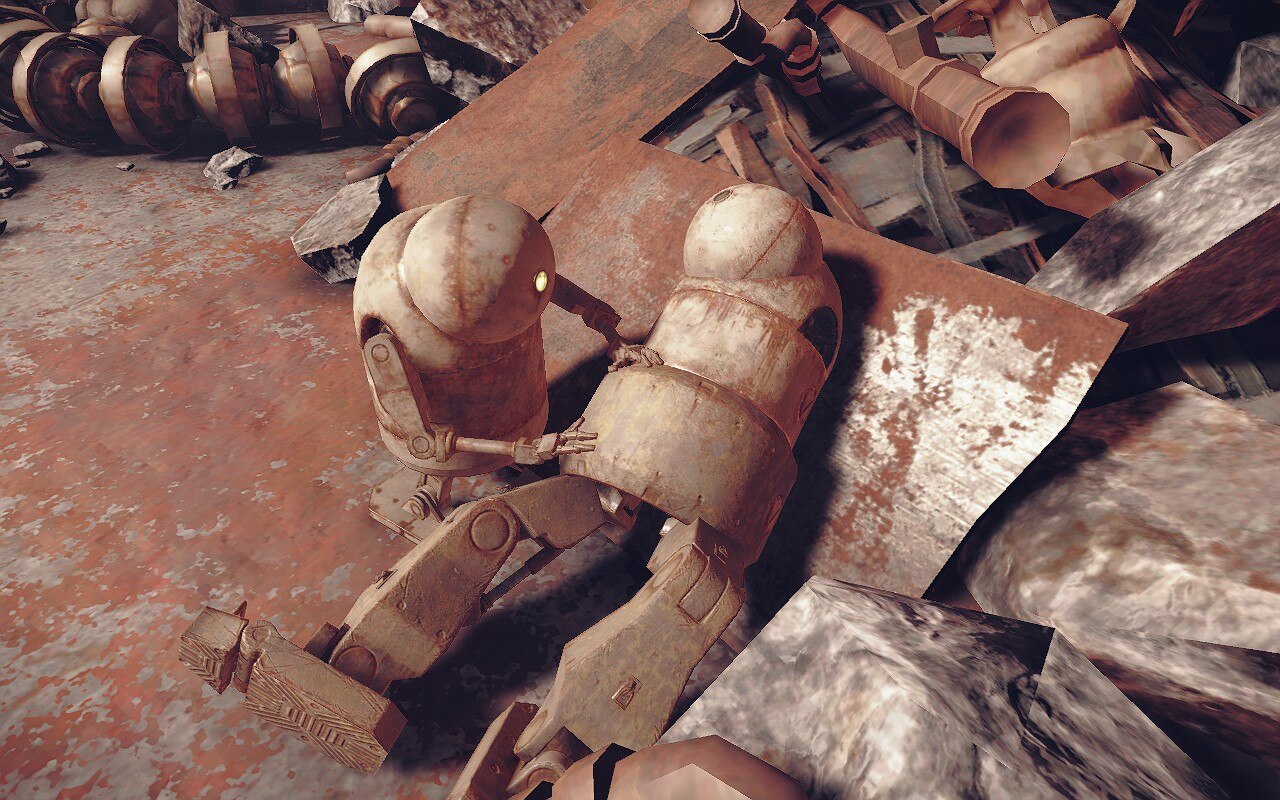
In conclusion, NieR: Automata confronts life’s most profound questions by weaving a dystopian future world, conflict between non-human beings, and character and relationship development into an unrivaled story telling experience. Platinum Games wraps game director Yoko Taro’s deeply thought-provoking message in its highly satisfying and signature fluid combat. As a result, 2B’s adventure leaves players mystified and wondering for a long time after finishing the game.
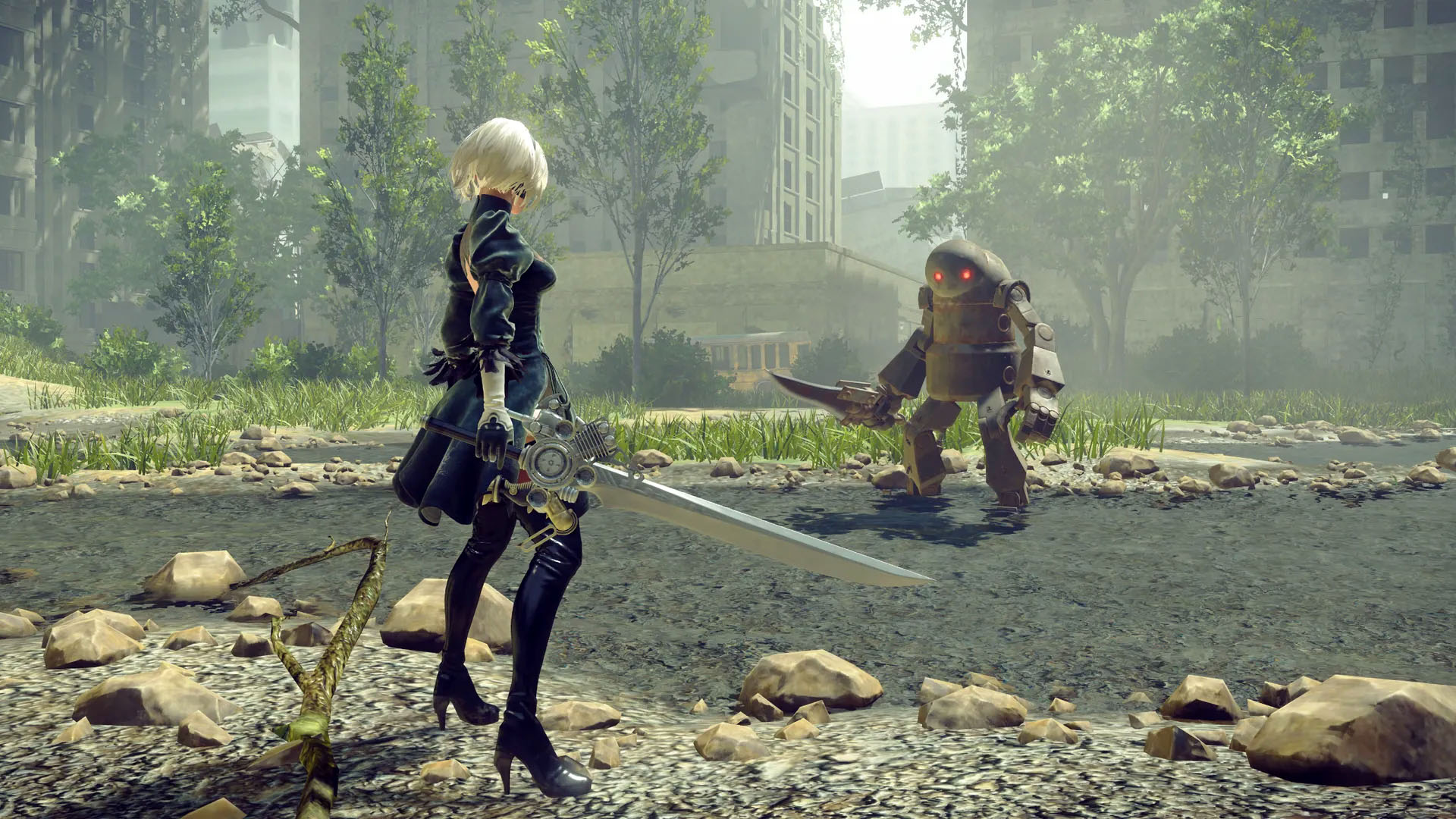
Leave a Reply